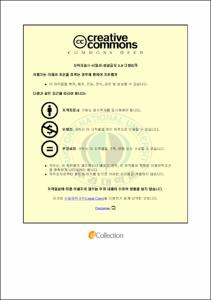부산 일부지역 중학생들의 수산물에 대한 인식조사
- Alternative Title
- Middle School Students' Perception on Seafood in Busan
- Abstract
- This study was conducted to analyse middle school students' perceptions of seafood as well as their eating experiences and favorite cooking methods for seafood. It also examined the frequency and use of seafood on school lunch menus. Questionnaires were distributed to 739 students in 5 middle schools in Busan area. For statistical analysis of the data, factor analysis, t-test, oneway ANOVA were conducted using SPSS win 10.0. This survey was conducted from December, 2007.
The results are summarized at follows ;
1. The scores for perceptions toward seafood were as follows : 3.67/5.00 for health & nutrition, 3.53/5.00 for taste, 2.53/5.00 for smell, 2.77/5.00 for convenience. The male students had significantly(p<0.05) higher perception scores for health & nutrition, taste, and smell than the female students.
2. Among thirty eight types of seafoods, the highest percentages for eating experiences included seaweed(99.2%), anchovy(99.1%), fish paste(98.6%), shrimp(98.4%), crab(98.2%), squid(97.9%), sea mustard(97.8%), mackerel(97.7%), dried squid(97.3%) and hair tail(96.9%). However, the lowest percentages for eating experiences included bastard halibut(39.8%), croaker(41.9%), sea bream(46.6%), flatfish(52.9%), dried pollack(54.5%), and jelly-fish(54.8%).
3. The degree of fish, clam, mollusk, seaweed, crustacea and salt fermented processed food, and dried seafood intake at home were significantly_(p<0.01) higher than at school.
4. The students favorite cooking methods for seafood were in the order of grilling, stir-frying, steaming, deep-fat frying and soup. However, the middle school lunch program primarily served as soup, seasoning, stir-frying, braised, deep-fat fried, and grilled respectively.
5. The cooking methods at school food service frequently used were represented in the order of soup, seasoning, stir-frying, braising, frying, and grilling.
6. The main reasons for leaving seafood on a plate were inconvenience due to the fishbone(62.7%), tasteless(45.4%), disliking smell(35.7%), unfavorite fish type(34.2%), low freshness(20.4%), inappropriate temperature(15.3%), dislike of seafood(15.0%), and frequent seafood providing(7.7%).
6. Improvements that students wanted for seafood on school lunch menus included removal of fishbone for convenience(67.0%), taste(52.0), and increased variety of seafood type(38.2%), improving hygienic for cooking(35.4%), improving cooking methods(33.9%), increasing of seafood supply(13.1%), and limit the numbers of seafood item in menu(13.0%).
- Issued Date
- 2009
- Awarded Date
- 2009. 8
- Type
- Dissertation
- Publisher
- 부경대학교 교육대학원
- Alternative Author(s)
- Lee, Hae-Koung
- Affiliation
- 부경대학교 교육대학원
- Department
- 교육대학원 영양교육전공
- Advisor
- 류은순
- Table Of Contents
- Ⅰ. 서론 = 1
1. 연구의 필요성 = 1
2. 연구의 목적을 위한 가설 설정 = 6
Ⅱ. 이론적 배경 = 8
1. 중학교 급식 = 8
2. 수산물에 대한 기호도 및 인식 = 9
가. 수산물에 대한 기호도 = 9
나. 수산물에 대한 인식 = 11
3. 학교급식의 식단 = 13
Ⅲ. 연구방법 = 15
1. 연구대상 및 방법 = 15
가. 연구대상 = 15
나. 학교에서 제공하는 수산물 식단 분석 = 16
2. 조사 내용 = 16
3. 자료 분석 = 19
Ⅳ. 연구 결과 = 20
1. 수산물식품에 대한 인식조사 = 20
가. 조사대상자의 일반사항 = 20
나. 수산물에 대한 인식 요인분석 = 22
다. 인구사회학적 특성에 따른 수산물 식품에 대한 견해 = 24
1) 수산물에 대한 인식 = 24
2) 수산물 식품의 조리법에 대한 선호도 = 29
3) 수산물 식품의 섭취정도 = 33
4) 수산물 식품에 대한 섭취 경험 = 37
라. 수산물 인식점수에 따른 수산물 식품 조리법에 대한 선호도 및 섭취행동 = 42
1) 수산물 인식점수에 따른 수산물 조리법에 대한 선호도 = 42
2) 수산물 인식점수에 따른 가정 및 학교에서의 수산물 식품 섭취 정도 = 44
3) 수산물 인식점수에 따른 수산물 식품의 섭취 경험 = 47
2. 학교급식에서 제공하는 수산물 식단 분석 = 51
가. 수산물 식단에서 조리방법별 빈도조사 = 51
나. 수산물 조리법 및 사용재료 빈도 = 53
다. 학교급식에서의 수산물 식품에 대한 견해 = 55
Ⅴ. 요약 및 결론 = 59
Ⅵ. 참고문헌 = 62
수산물 식품의 인식 및 이용현황 = 66
- Degree
- Master
- Files in This Item:
-
-
Download
 부산 일부지역 중학생들의 수산물에 대한 인식조사.pdf
기타 데이터 / 1.02 MB / Adobe PDF
부산 일부지역 중학생들의 수산물에 대한 인식조사.pdf
기타 데이터 / 1.02 MB / Adobe PDF
-
Items in Repository are protected by copyright, with all rights reserved, unless otherwise indicated.